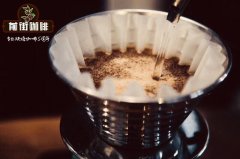Introduction to the process of washing coffee and beans with bright and clear acid

Professional coffee knowledge exchange more coffee bean information please follow the coffee workshop (Wechat official account cafe_style)
Introduction to the process of Qianjie-washing treatment
In every coffee production season, farmers collect the coffee fruit after picking and store it in a fixed open-air sink, which is filled with water, rotten branches and leaves, and density screening. Let's take a look at the process of washing treatment.
1. After picking, the fruit is poured into the sink, and the immature and overripe coffee fruit will float on the surface of the water. The ripe coffee fruit will sink to the bottom of the sink. In this way, the fruit is selected by natural water for the first time by using the buoyancy of water.
2. When the fruit enters the sink, the coffee fruit begins to soak and hydrolyze. The sink connects the ditch, and the coffee fruit moves continuously with the current of the ditch, rubbing against each other, and the peel and pulp begin to be loosened and separated.
3. Remove the pulp and peel of coffee mechanically, and the yellow mucous membrane of coffee is exposed.
4. Then the coffee beans begin to ferment. The time of fermentation is according to local conditions, the weather and climate of different producing areas are different, the time and effect of fermentation are different.
Central and South America ferment for 12 to 36 hours under the action of microbes in pools filled with water (except Brazil), and Kenya usually removes the gum by allowing pectin coffee to react naturally with microbes in the air.
5. After the fermentation is completed, the coffee with parchment will enter the flushing channel and rinse with a lot of water.
6. After the mucous membrane was removed, the coffee beans were dried.
First, the use of sunlight direct drying (drying speed is fast, coffee fruit compactness is relatively low); second, the combination of direct drying and mechanical drying (for example: using the sun for 2 days and then mechanical drying)
Third, shade drying (using natural wind and temperature for drying for a relatively long time); fourth, the combination of shade drying and sun drying (first shade drying and then sun drying).
It usually takes 10 days to one month to maintain the stability of water content, and the intermediate value of water content stability is about 12%.
7. Coffee with parchment will be put into a sack for "rest" for about 2-3 months.
8. The parchment with raw coffee beans removed is repackaged, exported and sold.
Washed coffee beans have natural characteristics: the coffee beans are transparent and green, the bean surface is smooth, the coffee beans are clean and sour. Because its washing method requires a lot of water, it is suitable for areas with abundant water resources (such as Africa, Central America, South America, Indonesia and Yunnan).
Knowledge: although coffee beans are called beans, they are actually the seeds of the fruits of Rubiaceae (coffee trees).
In short: Qianjie is a coffee research hall, happy to share the knowledge about coffee with you, we share unreservedly just to make more friends fall in love with coffee, and there will be three low-discount coffee activities every month. The reason is that Qianjie wants to make more friends drink the best coffee at the lowest price, which has been Qianjie's tenet for 6 years!
END
Important Notice :
前街咖啡 FrontStreet Coffee has moved to new addredd:
FrontStreet Coffee Address: 315,Donghua East Road,GuangZhou
Tel:020 38364473
- Prev

The texture of red bourbon fruit treated with honey from Jim Molina Manor in Nicaragua has a balanced taste.
Professional coffee knowledge exchange more coffee bean information please follow the coffee workshop (Wechat official account cafe_style) front street-Nicaraguan Jim Molina Manor Honey treatment Red bourbon introduction Nicaraguan (Nicaragua) coffee is unknown compared to Guatemalan (Guatemala) coffee. Compared with the mountain beans in Guatemala, the beans in Nicaragua are more balanced.
- Next

Coffee beans semi-washing method steps Coffee semi-washing method features an article let you understand seconds
Professional coffee knowledge exchange More coffee bean information Please pay attention to coffee workshop (Weixin Official Accounts cafe_style) Front street-Semi washing treatment process introduction Semi washing treatment method can be said to be the combination of solarization method and washing method. The idea is to use less water than washing to produce coffee that tastes cleaner than sun and thicker than washing.
Related
- Beginners will see the "Coffee pull flower" guide!
- What is the difference between ice blog purified milk and ordinary milk coffee?
- Why is the Philippines the largest producer of crops in Liberia?
- For coffee extraction, should the fine powder be retained?
- How does extracted espresso fill pressed powder? How much strength does it take to press the powder?
- How to make jasmine cold extract coffee? Is the jasmine + latte good?
- Will this little toy really make the coffee taste better? How does Lily Drip affect coffee extraction?
- Will the action of slapping the filter cup also affect coffee extraction?
- What's the difference between powder-to-water ratio and powder-to-liquid ratio?
- What is the Ethiopian local species? What does it have to do with Heirloom native species?

